List of female monarchs




- Top left: Elizabeth II is the longest-reigning female monarch, ruling as Queen of the United Kingdom for from 1952 to 2022, 70 years.
- Top right: Queen Victoria ruled the United Kingdom for 63 years, from 1837 to 1901; the longest at the time.
- Bottom left: Wilhelmina, Queen of the Netherlands for 58 years from 1890 to 1948, is the longest-reigning female monarch outside the United Kingdom.
- Bottom right: Margrethe II was Queen of Denmark for 52 years, from 1972 until her abdication in 2024; she is the most recent female sovereign.
This is a list of current and former female monarchs regardless of title, including queens regnant, empresses regnant, pharaohs and monarchs by other titles (grand duchess, princess, etc.). Consorts, such queens consort (i.e. spouses of male monarchs) are not included, see list of current consorts of sovereigns. Female regents are not included, see list of regents.
The following is an incomplete list of women monarchs who are well known from popular writings, although many ancient and poorly documented ruling monarchs (such as those from Africa and Oceania) are omitted. Section 1 lists monarchs who ruled in their own right, such as queens regnant. Section 2 lists legendary monarchs. Section 3 lists constituent monarchs: monarchs who ruled in their own right, but had no constitutional standing or regal powers while in power. Section 4 lists various female rulers who were referred to with the title "Chieftainess." Regents, such as queens regents, are not monarchs and are not included in this page. Pretenders to thrones are also not included in this page.
Monarchs
Africa
North Africa
Algeria
Hoggar Mountains
| Monarch | Portrait | Reign dates | Length | Ref. |
|---|---|---|---|---|
| Tin Hinan |  | 4th century AD | Unknown |
Kingdom of the Aurès
| Monarch | Portrait | Reign dates | Length | Ref. |
|---|---|---|---|---|
| Dihya |  | c. 668–703 AD | c. 35 years |
Canary Islands
The Canary Islands are Spanish territories of North Africa.
| Monarch | Portrait | Title | Reign dates | Length | Ref. |
|---|---|---|---|---|---|
| Inés Peraza | – | Queen | 1452–1477 | 25 years | [1] |
Kingdom of the Canary Islands
The title of "King/Queen of the Canary Islands" was included in the list of titles and honours of the Spanish Crown.
| Monarch | Portrait | Reign dates | Length | Ref. |
|---|---|---|---|---|
| Isabella I of Castile |  | 4 September 1479–26 November 1504 | 25 years, 2 months, 22 days | |
| Joanna of Castile |  | 26 November 1504–12 April 1555 | 51 years, 7 months, 14 days | |
| Isabella II of Spain |  | 29 September 1833–30 September 1868 | 35 years, 1 day |
Egypt
Pharaonic Egypt
The first verified female monarch of Egypt is Sobekneferu of the Twelfth dynasty. However, queens from earlier periods such as Neithhotep, Merneith and Khentkaus I held powerful positions and may have ruled Egypt in their own right, but the archaeological evidence is ambiguous.[2]
| Monarch | Portrait | Reign dates | Length | Ref. |
|---|---|---|---|---|
| Sobekneferu |  | Mid-18th century BC | 3 years, 10 months and 24 days | [3] |
| Hatshepsut |  | c. 1479–1458 BC | c. 21 years | [4] |
| Neferneferuaten |  | c. 1334–1332 BC | c. 3 years | |
| Twosret |  | 1191–1189 BC | 2 years |
Ptolemaic dynasty
Ptolemy II instituted a new practice of brother-sister marriage when he married his full sister, Arsinoe II. They became, in effect, co-rulers, and both took the epithet Philadelphus ("Brother-Loving" and "Sister-Loving"). Because of this custom many of the kings ruled jointly with their spouses, who were also of the royal house. The only Ptolemaic Queens who ruled alone were Cleopatra II, Berenice III and Berenice IV. Cleopatra VI did co-rule, but it was with another female, Berenice IV. Cleopatra VII officially co-ruled with Ptolemy XIII Theos Philopator, Ptolemy XIV, and Ptolemy XV, but effectively, she ruled Egypt alone.
| Monarch | Portrait | Reign dates | Length | Co-ruler(s) | Ref. |
|---|---|---|---|---|---|
| Arsinoe II |  | 273/272–270/268 BC | 2 to 5 years | Ptolemy II | [5] |
| Berenice II |  | 246–222 BC | 23 years | Ptolemy III | [6] |
| Arsinoe III |  | 220–204 BC | 16 years | Ptolemy IV | [7] |
| Cleopatra I |  | 193–176 BC | 17 years | Ptolemy V Ptolemy VI | [8] |
| Cleopatra II |  | c. 175–164 BC 163–127 BC 124–115 BC | c. 54 years | Ptolemy VI Ptolemy VIII Cleopatra III Ptolemy IX | [9] |
| Cleopatra III |  | c. 141–130 BC c. 127–101 BC | c. 37 years | Ptolemy VIII Cleopatra II Ptolemy IX Cleopatra IV Ptolemy X | [10] |
| Cleopatra IV | – | 116–115 BC | 1 year | Cleopatra III Ptolemy IX | [11] |
| Berenice III |  | 101–88 BC 81–80 BC | 14 years | Ptolemy X Ptolemy XI | [12] |
| Cleopatra V | 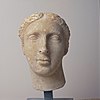 | 79–69 BC | 10 years | Ptolemy XII | [13] |
| Cleopatra VI | – | 58–57 BC | 1 year | Berenice IV | [14] |
| Berenice IV | – | 58–55 BC | 3 years | Cleopatra VI | [15] |
| Cleopatra VII |  | 52–30 BC | 22 years | Ptolemy XII Ptolemy XIII Ptolemy XIV Ptolemy XV | [16] |
| Arsinoe IV |  | October 48–January 47 BC | 3 months | Ptolemy XIII | [17] |
Roman Egypt
Zenobia took Roman Egypt by Palmyrene invasion and was declared Queen of Egypt.
| Monarch | Portrait | Reign dates | Length | Ref. |
|---|---|---|---|---|
| Zenobia |  | October 270–June 272 | 1 year and 9 months | [18] |
| Monarch | Portrait | Reign dates | Length | Ref. |
|---|---|---|---|---|
| Shajar al-Durr |  | 2 May–30 July 1250 | 90 days |
Libya
| Monarch | Portrait | Reign dates | Length | Ref. |
|---|---|---|---|---|
| Berenice II |  | 258–246 BC | 12 years | |
| Cleopatra Selene II |  | 34–30 BC | 4 years |
Sudan
| Monarch | Portrait | Reign dates | Length | Ref. |
|---|---|---|---|---|
| Hatshepsut |  | c. 1479–1458 BC | c. 21 years | |
| Neferneferuaten |  | c. 1334–1332 BC | c. 2 years | |
| Twosret |  | 1191–1189 BC | 2 years |
Kandake was a title for queens, queen mothers, and queens consort in Nubia, but ruling kandakes included:
| Monarch | Portrait | Reign dates | Ref. |
|---|---|---|---|
| Nahirqo |  | Mid-2nd century BC | [19] |
| Unknown kandake | – | End of 2nd–first half of 1st century BC | [20] |
| Amanirenas |  | End of 1st century BC–Beginning of 1st century AD | |
| Amanishakheto |  | Early 1st century AD | |
| Shanakdakhete | – | First half of the 1st century AD | |
| Nawidemak |  | ||
| Amanitore |  | Mid-1st century AD | |
| Amanikhatashan |  | Mid-2nd century AD | [21] |
| Amanikhalika |  | Second half of the 2nd century AD | [22] |
| Patrapeamani [de] | – | First half of the 4th century AD | [21] |
| Amanipilade |  | Mid-4th century AD |
| Monarch | Portrait | Reign dates | Length | Ref. |
|---|---|---|---|---|
| Gaua | – | c. 1520–1526 | c. 6 years | [23] |
West Africa
Benin
Hogbonu
| Monarch | Portrait | Reign dates | Length | Ref. |
|---|---|---|---|---|
| Hude | – | 1746–1752 | 6 years |
The Gambia
- Elizabeth II, Queen of the Gambia (reigned 1965–1970)
Ghana
- Elizabeth II, Queen of Ghana (reigned 1957–1960)
- Amoako Atta Yiadom (reigned 1770–1793), Denkyirahene
- Ama Serwah (reigned 1838–1846), Dwabenhene
- Unknown Dwabenhene (reigned 1846-18??)
- Nana Juaben Serwah II (reigned 1959–19??), Dwabenhene
- Nana Afia Dokuaa (reigned 1817–1835)
Gã
- Dode Akaabi (reigned 1610–1635)
Guinea-Bissau
- Aurelia Correia (reigned 1830–1874/1879)[24]
- Okinka Pampa Kanyimpa (reigned c. 1910–1930) – Succeeded her father Bankajapa.
- Juliana of Canhabaque[25] (reigned in the early 1900s)[24]
- Idiana Ibop[26] (reigned until the 1920s)[24]
Côte d'Ivoire
- Pokou (reigned c. 1750 – c. 1760)[27] – Queen and founder of the Baoule tribe.
- Akwa Boni (reigned c. 1760 – c. 1790)[27] – Pokou's niece who succeeded her to the throne.
Liberia
- Famata Bendu, queen of the Vai people (reigned ?–1892)[28]
Mali
- Kassi (reigned ?–1352/1353), co-ruler with Mansa Sulayman
Nigeria
- Elizabeth II, Queen of Nigeria (reigned 1960–1963)
- Aissa Koli (reigned 1497–1504 or 1563–1570)
The title "Kabara" was used by female monarchs who ruled over the Hausa people in the Middle Ages. A line of matriarchal monarchs is recorded in the Kano Chronicle that ends with the reign of Daurama in the 9th century.[29] These queens reigned from c. 700 to c. 1000.[30]
- Kufuru
- Ginu
- Yakumo
- Yakunya
- Wanzamu
- Yanbamu
- Gizir-gizir
- Inna-Gari
- Daurama
- Ga-Wata
- Shata
- Fatatuma
- Sai-Da-Mata
- Ja-Mata
- Ha-Mata
- Zama
- Sha-Wata
- Daurama II
- Emose (reigned 584–600)
- Orrorro (reigned 600–618)
- Pupupu, founder and ruler of the Ondo Kingdom c. 1510.
- Amina – There is controversy among scholars as to the date of her reign, one school placing her in the mid-15th century, and a second placing her reign in the mid to late 16th century.
- Ooni Luwoo (reigned in the 10th century)
- Ebulejonu, also known as Ebule (reigned in the 16th century)[31]
Senegal
Lingeer's leadership activities were carried out at the highest tier, as a co-monarch.
- Lingeer Fatim Beye (reigned c. 1335)
- Lingeer Ndoye Demba (reigned c. 1367) – she was the founder of the Serer Joos Maternal Dynasty
- Lingeer Ngoné Dièye
- Njembot Mbodj
- Ndaté Yalla Mbodj
- Lingeer Selbeh Ndoffene Joof
Sierra Leone
- Elizabeth II, Queen of Sierra Leone (reigned 1961–1971)
- Fatima (reigned 1826–1840)[32]
- Madam Yoko (reigned 1878–1906)
Central Africa
Angola
Jaga
- Mussasa (reigned in the 17th century)
- Tembandumba
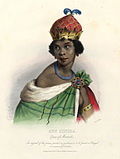
- Mwongo Matamba [sv] (reigned ?–1631) – she was captured and deposed by Ana Nzinga in 1631
- Ana I de Sousa Nzinga Mbande (reigned 1631–1663)
- Barbara (reigned 1663–1666)
- Verónica I Guterres Kandala Kingwanga (reigned 1681–1721)
- Ana II (reigned 1742–1756)
- Verónica II (reigned 1756–1758)
- Ana III (reigned 1758–1767)
- Vamwene Naama
- Vamwene Yamvu
- Vamwene Mbaao ya Chinguli (reigned in the 1500s–early 1600s)
- Vamwene Kaamba ka Mbaao
- Vamwene Mukenge wa Lweembe, Livindamo
- Ana de Sousa Nzinga Mbande (reigned 1624–1626 and 1657–1663)
- Mukambu Mbandi (reigned 1663–1671)
Kingdom of Jinga
- Kamana (reigned 1767–1810)
There were two female monarchs during Kongo Civil War.
- Ana Afonso de Leão, queen of Kinlaza
- Suzana de Nóbrega [pt], queen of Kimpanzu
Cameroon
- Soukda, founder of Mandara Kingdom (reigned c. 1500)
- Ngoungoure, queen of Bamum (reigned 1865) – her rule lasted 30 minutes
East Africa
Comoros
Ndzuwani (Anjouan)
- Alimah I (reigned during the 16th century – unknown start date, reign ended c. 1590)
- Alimah II (reigned c. 1632 – c. 1676)
- Alimah III (reigned c. 1676 – c. 1711)
- Alimah IV (reigned 1788–1792) – she was the de facto ruler of Anjouan with sultan Abdallah I during his reigns in 1782–1788 and 1792–1796.
- Nyau wa Faume
- Fey Beja waWabeja, Mfalme
- Ja Mhaba, Mfalme
- Hadija bint Ahmed, Mfalme
- Raketaka Jombe Sudy (reigned 1842–1865 and 1874–1878) – she also ruled as regent twice, 1865–1868 and 1871–1874. After 1851 she took the name of Jumbe Fatima bint Abderremane
- Salima Machamba bint Saidi Hamadi Makadara (reigned 1888–1909)

Ethiopia
- Zewditu (reigned 1916–1930) – Daughter of Menelik II. She ascended to the throne after her nephew Iyasu V was deposed.
Kenya
- Elizabeth II, Queen of Kenya (reigned 1963–1964)
Names taken from Female Rule in the Indian Ocean World (1300–1900).[33]
- Mwana Masuru
- Maryamu
- Mwana Mkisi
- Mwana Inali
- Mwana Darini binti Bwana Mkuu bin Abubakar
- Asha binti Muhammad
- Mwanai Mimi
- Mwana Khadija binti Omari

Madagascar
- Rangita (reigned 1520–1530) – Daughter of king Rafandramanenitra.
- Rafohy (reigned 1530–1540) – Daughter of queen Rangita.
- Ranavalona I (reigned 1828–1861) – Wife of Radama I.
- Rasoherina (reigned 1863–1868) – Wife of Radama II.
- Ranavalona II (reigned 1868–1883) – Wife of Radama II and cousin of Rasoherina.
- Ranavalona III (reigned 1883–1897) – Niece of Ranavalona II.
The female monarchs of Madagascar traditional states were:[34]
- Ramananandrianjaka Rambolamasoandro
- Rabehety
- Andrianaginarivo (reigned 1777–1778)
- Tombola (reigned 1778)
- Ravahiny (reigned 1778–1808)
- Oantitsy (reigned 1832–1836)
- Tsiomeko (reigned 1836–1840)
- Bibiasa
Bemihisatra
Bemazava
- Irana Andriamamelonarivo
- Tsiresy I Andriamanomponarivo
- Tsiresy II Nenimoana
- Ambary of Antankarana
- Soanaomby
Imarovatana
- Ramanandrianjaka II Ravorombato
Mauritius
- Elizabeth II, Queen of Mauritius (reigned 1968–1992)
Mozambique
- Queen of Angoche, name unknown (reigned c. 1550)[33]
Somaliland
- Māti Layla Abūd (reigned in the 14th century)
South Sudan
- Abudok [fr], the eighth ruler (and only queen) of the Shilluk.[35]
Tanzania
- Elizabeth II, Queen of Tanganyika (reigned 1961–1962)
- Therese Ntare VI of Heru[36]
Names taken from Female Rule in the Indian Ocean World (1300–1900).[33]
- Mwana Aziz
- Mwana Miveni
- Mwana Aisha
- Mwana Fatuma binti Darhash
- Mwana Hadiya
- Mwana Mize binti Muaba
- Mwana Mwema, queen of Unguja[37] (reigned ?–1653)[38]
- Fatuma binti Yussuf, queen of Unguja (reigned ?–1698 and 1709–1715)
- Mwana wa Mwana
- Mwanzuani
- Mwana Khazija binti Ngwali
- Fatuma binti Ali
- Sabini binti Ngumi
Uganda
- Elizabeth II, Queen of Uganda (reigned 1962–1963)
- Masamba Ga Winyi (reigned in the early 17th century; 5 Years)
Paroketu
- Akech (reigned 1760–1787)[39]
The female monarchs of Songora were:[40]
- Kogyere I Rusija-Miryango
- Kogyere II
- Njunaki Kamaranga
- Nyakahuma
- Kitami kya Nyawera
- Kantunguru
- Kogyere III Ikamiro
Southern Africa
Malawi
- Elizabeth II, Queen of Malawi (reigned 1964–1966)
Namibia
- Kapango (reigned c. 1750)[41]
- Nakashwa (reigned 1862)[42]
- Martha Nelumbu (reign 2005–)
- Maria Mwengere (reigned 1947–1987)[42]
- Angelina Matumbo Ribebe (reigned 1989–2015)[43]
- Sofia Mundjembwe Kanyetu (reign 2023–)[44]
- Mate I (reigned c. 1750)[42]
- Nankali (reigned c. 1775)[42]
- Simbara (reigned 1785–1800)[42]
- Mate II (reigned 1800–1818)[42]
- Mpande (reigned 1880–1886)[42]
- Kanuni (reigned 1926–1941 and 1958–1971)[42]
South Africa
- Elizabeth II (reigned 1952–1961)
- Mamani kaPhahlo (reigned 1732–1758)
The Modjadji or Rain Queen is the hereditary queen of Lobedu, the people of the Limpopo Province of South Africa. The succession to the position of Rain Queen is matrilineal, meaning that the Queen's eldest daughter is the heir, and that males are not entitled to inherit the throne at all. The Rain Queen is believed to have special powers, including the ability to control the clouds and rainfall.
- Maselekwane Modjadji (reigned 1800–1854)
- Masalanabo I Modjadji (reigned 1854–1894)
- Khetoane Modjadji (reigned 1895–1959)
- Makoma Modjadji (reigned 1959–1980)
- Mokope Modjadji (reigned 1981–2001)
- Makobo Modjadji (reigned 2003–2005)
- Masalanabo II Modjadji
Zambia
- Mamochisane, queen of Makololo tribe (reigned c. 1851)
Zimbabwe
- Elizabeth II, Queen of Rhodesia (reigned 1965–1970)
The Americas
North America
Canada
- Victoria (reigned 1837–1901)
- Elizabeth II (reigned 1952–2022)
Mexico
- Che'enal [sv] (reigned c. 565 – c. 574)
- Lady Yopaat [sv] (reigned c. 600 – c. 640)
- Lady K’awiil Ajaw (reigned 640–682)
- Tlapalizquixochtzin (reigned in the late 15th–early 16th century)

- Ix Yohl Ik'nal (reigned 583–604)
- Sak K'uk', also known as Muwaan Mat (reigned 612–615)
- Azcasuch (reigned in the late 15th–early 16th century)
- Xiuhtlaltzin (reigned 979–983)
- Lady K'awiil Yopaat (reigned 762–774)
- Malinxalchitl (reigned ?–1524)
- Lady 9 Wind Stone Quexquemitl
- Lady 6 Monkey War Quexquemitl
- Lady 1 Death
- Lady 13 Flower Precious Bird
- Lady 2 Flower Rising Jewel
- Lady 11 Monkey Jade Spiderweb
- Lady 11 Alligator Quetzal Jewel
- Lady 2 Jaguar Jade Spiderweb
- Lady 5 Rabbit Jewel
- Lady 3 Jaguar Precious Butterfly Sun
- Lady 6 Water Quetzal Jewel of Flower War
- Lady 3 Rabbit Divine Flame
- Lady 12 Flower Broken Mountain Butterfly
- Lady 11 Rabbit Jewel of the Rising Sun
- Lady 8 Deer Quetzal Spiderweb
- Lady 1 Flower Jaguar Quexquemitl
Central America
Belize
- Elizabeth II (reigned 1981–2022)
- Lady Ich’aak K’inich[45] (reigned c.710–731)
Guatemala
El Perú
- Lady K'abel (reigned 672–692)
La Florida
- Lady Chaak (reigned c. 731)[46]
- Wac Chanil Ahau, also known as Lady Six Sky
- Unen Bahlam (reigned c. 317)
- Lady of Tikal (reigned 511–527?)
The Caribbean
Antigua and Barbuda
- Elizabeth II (reigned 1981–2022)
Bahamas
- Elizabeth II (reigned 1973–2022)
Barbados
- Elizabeth II, Queen of Barbados (reigned 1966–2021)
Grenada
- Elizabeth II (reigned 1974–2022)
Jamaica
- Elizabeth II (reigned 1962–2022)
Saint Kitts and Nevis
- Elizabeth II (reigned 1983–2022)
Saint Lucia
- Elizabeth II (reigned 1979–2022)
Saint Vincent and the Grenadines
- Elizabeth II (reigned 1979–2022)
South America
Brazil
- Maria I (reigned as Queen of Brazil 1815–1816) – she was also Queen of Portugal in 1777–1816
Ecuador
Guyana
- Elizabeth II, Queen of Guyana (reigned 1966–1970)
Peru
- Lady of Cao, Moche ruler[47]
Suriname
- Juliana (reigned 1954–1975)
Trinidad and Tobago
- Elizabeth II, Queen of Trinidad and Tobago (reigned 1962–1976)
Asia
East Asia
China

- Wu Zetian (Chinese: 武則天) – Empress regnant of China, ruling from 690 to 705. She was the only orthodox reigning empress in the history of China.
Although Wu Zetian is the only undisputed empress regnant recognized in orthodox Chinese historiography, there are two other documented cases of a woman holding the title of "Empress regnant" in Chinese history:
- Daughter of Emperor Xiaoming of Northern Wei (Chinese: 元氏 (北魏孝明帝女); reigned 1–2 April 528) – during Northern Wei Dynasty, Empress Dowager Hu, after her son Emperor Xiaoming of Northern Wei's death, falsely declared Emperor Xiaoming's daughter to be a son and declared the daughter to be the new ruler, but almost immediately revealed that the child was in fact female, and thereafter declared Yuan Zhao, the young son of Emperor Xiaoming's cousin Yuan Baohui (元寶暉) emperor. Emperor Xiaoming's daughter is also therefore not usually considered a true monarch.
Eastern Kingdom of Women [zh]
In Tibet, there was Nüguo (Chinese: 女國, lit. "Kingdom of Women"), also known as Dong nüguo (Chinese: 東女國, lit. "Eastern Kingdom of Women"), related to the tribe Sumpa.[48] Several queens regnant of there were recorded in Chinese history books.
- Supi Mojie (Chinese: 蘇毗末羯)[49]
- Dajiawa (Chinese: 达甲瓦)[50]
- Qibangsun (Chinese: 弃邦孙)[50]
- Tangpangshi (Chinese: 湯滂氏)[51]
- Lianbi (Chinese: 斂臂)[51]
- Eyaner (Chinese: 俄琰兒)[51]
- Zhaoyefu (Chinese: 趙曳夫)[51]
Wuman
- Acha (Cuanman) [zh] (Chinese: 阿姹) – her son Cuan Shouyu [zh] submitted to Geluofeng [zh] of Nanzhao, and instead she declared herself Wáng of the Wuman tribe (烏蠻部落王)[52]
Japan
| Monarch | Portrait | Reign dates | Length | Ref. |
|---|---|---|---|---|
| Queen Himiko of Yamatai | – | c. 180–247/248 AD | c. 68 years | [53] |
| Queen Toyo of Yamatai | – | c. 248–unknown | Unknown | [54] |
| Empress Suiko |  | 593–628 | 35 years | [55] |
| Empress Kōgyoku | 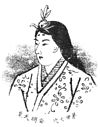 | 642–645 | 3 years | [56] |
| Empress Saimei | 655–661 | 6 years | ||
| Empress Jitō | 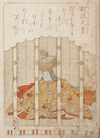 | 686–697 | 9 years | [57] |
| Empress Genmei | 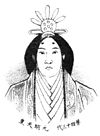 | 707–715 | 8 years | [58] |
| Empress Genshō |  | 715–724 | 9 years | [59] |
| Empress Kōken |  | 749–758 | 9 years | |
| Empress Shōtoku | 764–770 | 6 years | ||
| Empress Meishō |  | 1629–1643 | 14 years | [60] |
| Empress Go-Sakuramachi |  | 1762–1771 | 9 years | [61] |
Korea
South Asia
Bangladesh
- Kalindi (reigned 1832–1873)
India
- Ballamahadevi (reigned 1275–1292) – she ruled with her son Nagadevarasa
- Ali Raja Bibi Harrabichi Kadavube (reigned 1728–1732)
- Ali Raja Bibi Junumabe I (reigned 1732–1745)
- Ali Raja Bibi Junumabe II (reigned 1777–1819)
- Prafulla Kumari Devi (reigned 1922–1936)
- Tribhuvana Mahadevi I (reigned 845–850)
- Tribhuvana Mahadevi II (reigned 890–896)
- Tribhuvana Mahadevi III (reigned 896–905)
- Gauri Mahadevi (reigned c. 910 – c. 916)
- Dandi Mahadevi (reigned c. 916 – c. 936)
- Vakula Mahadevi (reigned c. 936 – c. 940)
- Dharma Mahadevi (reigned c. 940 – c. 950)
- Qudsia Begum (reigned 1819–1837) – in 1819, 18-year-old Qudsia Begum (also known as Gohar Begum) took over the reins after the assassination of her husband, Nawab Muiz Muhammad Khan Bahadur. She was the first female ruler of Bhopal. She declared that her 2-year-old daughter Sikander would follow her as the ruler; none of the male family members dared to challenge her decision. She ruled till 1837, when she died having adequately prepared her daughter for ruling the state.
- Begum Sultan Shah Jehan (reigned 1844–1860 and 1868–1901) – Shahjahan was the only surviving child of Sikandar Begum, sometime Nawab of Bhopal by correct title, and her husband Jahangir Mohammed Khan. She was recognised as ruler of Bhopal in 1844 at the age of six; her mother wielded power as regent during her minority. However, in 1860, her mother Sikandar Begum was recognised by the British as ruler of Bhopal in her own right, and Shahjahan was set aside.
- Begum Nawab Sikandar (reigned 1860–1868)
- Begum Kaikhusrau Jahan (reigned 1901–1926)
- Victoria, Empress of India (reigned 1876–1901)
- Rani Chennabhairadevi (reigned 1552–1606)[62]
- Ahilyabai Holkar (reigned 1767–1795), also known as the Philosopher Queen
- Rani Rudrama Devi (reigned 1262–1295)
- Sugandha (reigned 904–906)
- Didda (reigned 980–1003), she ruled first as a Regent for her son Abhimanyu and thereafter as sole ruler in her own right
- Kota Rani (reigned 1338–1339)
- Keladi Chennamma (reigned 1672–1697)
- Virammaji (reigned 1757–1763)
Mamluk dynasty
- Razia Sultana (reigned 1236–1240)
- Viswavasa Devi (reigned 1431–1443)[63]
- Rani Mohan Kumari (reigned 1827–1833)[64]
- Velu Nachiyar (reigned c. 1780 – c. 1790)
- Vellacci (reigned c. 1790 – c. 1793)
- Sujana Bai (reigned 1737–1738)
- Gowri Lakshmi Bayi of Travancore (reigned 1810–1813) – she also ruled 1813–1815 as regent
- Abbakka Chowta (reigned 1525–1570)
Maldives
- Damahaar (reigned before 990) – Damahaar, a Ranin (Queen) of the Aadeetta (Sun) Dynasty, is mentioned by al-Idrisi as having reigned over the Maldives at some time before the semi-legendary King Koimala; there are several other mentions by foreign travelers, mainly Arabs, of queens ruling over the Maldives at various times; these are not always named and their reigns cannot be precisely dated
- Khadijah (reigned 1347–1363, 1364–1374, and 1376–1380)
- Raadhafathi (reigned 1380)
- Dhaain (reigned 1385–1388)
- Kuda Kala Kamanafa’anu (reigned 1607–1609)
- Amina I (reigned 1753–1754)
- Amina II (reigned 1757–1759)
Nepal
- Ganga Rani, co-ruler of Trailokya Malla (reigned in the 16th century)
Pakistan
- Elizabeth II (reigned 1952–1956)
- Cleophis (reigned 326 BC–?)
- Dadi Jawari (reigned 1642—1667 and 1689—1705) — also known as Malika Jawahir Khatun
- Malika Sahibnuma, also spelled as Sahebnuma[65] (reigned 1825–1828)[66]
- Hamoon (reigned 1107) – she occupied the throne after her husband Sanghar's death, but was soon crushed by the nobles[67]
Sri Lanka
- Anula of Anuradhapura (reigned 47–42 BC)
- Sivali of Anuradhapura (reigned 35)
- Lilavati of Polonnaruwa (reigned 1197–1200, 1209–1210, and 1211–1212)
- Kalyanavati of Polonnaruwa (reigned 1202–1208)
- Kusumasana Devi (reigned 1581)
- Sugala Devi (reigned ?–1158) — she led Queen Sugala rebellion in 1157
- Elizabeth II (reigned 1952–1972)
Southeast Asia
Cambodia

- Queen Soma (reigned in the 1st century)
- Kulaprabhavati (reigned 514–517) – there was a succession war between her and her stepson Rudravarman for three years
- Kambuja-raja-lakshmi (reigned 575–580)
- Jayadevi (reigned 681–713) – during her rule, she was faulted in leadership which led the Chenla kingdom to break into two individual states, but then it record the period to be female-dominated dynasty with the wide range of female successors, totally driving the entire kingdom
- Indrani (reigned in the 8th century)
- Nṛpatendradevī (reigned in the 8th century)
- Jayendrabhā (reigned in the 8th century)
- Jyeṣṭhāryā (reigned c. 803)
- Queen Tey (reigned 1687)
- Ang Mey (reigned 1835–1840 and 1844–1846) – also known as Ngọc Vân Quận chúa (Lady Ngọc Vân – Vietnamese) or Ksat Trey, she was proclaimed on the death of her father by the Vietnamese faction at court with the title of Mỹ Lâm Quận chúa (Lady Mỹ Lâm – Vietnamese). She was famous as a Vietnamese puppet queen
- Queen Sisowath Kossamak (reigned 1960–1970, disputed) – After her husband King Norodom Suramarit's death, Kossamak kept her title of Queen and continued to function as the symbol and representative of the monarchy while Sihanouk assumed his position as monarch, but titled as Prince rather than King.
Indonesia
- Seri Ratu Ta'jul Alam Shah (reigned 1641–1675) – the Sultana of Atjeh (Aceh) Darussalam, formerly known as Puteri Seri Alam the Daughter of the Great Sultan Iskandar Muda, and wife of Sultan Iskandar Thani
- Seri Ratu Naqiatuddin Nurul Alam (reigned 1675–1678)
- Seri Ratu Inayat Shah (reigned 1678–1688)
- Seri Ratu Kamalat Syah (reigned 1688–1699) – she was deposed and replaced by her husband under pressure from the Mufti of Mecca
- Śri Wijaya Mahadewi (reigned c. 983)
- Mahendradatta (reigned before 989–1007)
- Śri Ajñadewi (reigned c. 1016)
- Śri Maharaja Sakalendukirana Laksmidhara Wijayottunggadewi (reigned c. 1088–1101)
- Arjayadengjayaketana (reigned c. 1200)
- Queen of Bali, name unknown (reigned ?–1284) – in 1284, Kertanegara attacked Bali and captured the queen of Bali[68]
Kingdom of Klungkung [id]
- Dewa Agung Istri Kanya [id] (reigned 1814–1850)
- Siti Aisyah We Tenriolle (reigned 1855–1910)
- Maharani Shima (reigned 674–695)

- Tribhuwana Wijayatunggadewi (reigned 1328–1350)
- Suhita (reigned 1429–1447)
- Śri Isyana Tunggawijaya (reigned 947–985)
- Bi Sonbai, also known as Usi Tetu Utang, in western Timor (reigned 1672–1717)
- Ratu Kalinyamat (reigned c. 1549–after 1579)
- Tumanurung Baine
- Ratu Nahrasyiyah [id]
- We Banrigau, Mallajange ri Cina
- We Tenrituppu, Matinroe ri Bantaeng
- We Bataritoja, Sultanah Zainab Zulkiyahtuddin (reigned 1714–1715 and 1724–1749)
- We Imaniratu, Sultanah Rajituddin
- We Tenriawaru, Sultanah Ummulhuda
- We Fatimah Banri, Datu Citta
- Wan Sri Benian,[71] queen of Bintan (reigned c. 1290)
- Ratu Sukadana (reigned 1608–1622)
Laos
- Nang Keo Phimpha (reigned 1438) – after her nephew Lan Kham Deng died, she seized control of Lan Xang and the next four kings were under her control. She only reigned for a few months in 1438 at the age of 95; she was then deposed and killed.
Malaysia
- Puteri Saadong (reigned 1667–1671)
Myanmar
- Shin Sawbu (reigned 1454–1471)
- Saw Yin Mi (reigned the 1420s–1437)
- Kuverami (reigned 334–341)
Philippines
- Dayang Kalangitan (reigned c. 1450–c. 1500)
- Queen of Maynila, name unknown (reigned c. 1521) – she succeeded her husband Salalila and was succeeded by her son Matanda; according to oral traditions, her name is "Ysmeria"
- Nur ul-Azam (reigned c. 1685)[74]
Thailand
- Jamadevi (reigned in the 6th–7th century) — first ruler of the Mon kingdom of Hariphunchai
- Ratu Hijau, 'the Green Queen' (reigned 1584–1616)
- Ratu Biru, 'the Blue Queen' (reigned 1616–1624)
- Ratu Ungu, 'the Purple Queen' (reigned 1624–1635)
- Ratu Kuning, 'the Yellow Queen' (reigned 1635–1651)[75]
- Raja Mas Kelantan (reigned 1670–1698)[75]
- Raja Mas Chayam (reigned 1698–1702 and 1716–1718)[75]
- Raja Dewi (reigned 1702–1711)[75]
- Chiraprapha (reigned 1545–1546)
- Wisutthi Thewi (reigned 1564–1578)
Timor-Leste
There were many chiefdoms on Timor, but according to the hierarchy among the Timorese domains, the ruler of Sonbai of West Timor, the ruler of Wehali of Central Timor, and the ruler of Likusaen (today: Liquiçá) of East Timor were three paramount rulers of Timor.[76]
- Dona Ursula da Costa (reigned c. 1818)[77]
- Dona Gracia da Costa Rodrigues Pereira (reigned c. 1881 – c. 1883)[77]
- Dona Engracia da Costa Delgado (reigned c. 1890 – c. 1892)[77]
Vietnam
- Queen Trưng Trắc (reigned 40–43) – the Trưng sisters (Vietnamese: Hai Bà Trưng, lit. 'two ladies Trưng') were leaders who rebelled against Chinese rule for three years, and are regarded as national heroines of Vietnam. Her name is Trưng Trắc.
- Trưng Nhị [vi], co-ruler of Trưng Trắc
- Lady Triệu (reigned 248), also known as Lệ Hải Bà Vương (chữ Hán: 麗海婆王, lit. "beautiful sea's lady king")[78]
- Empress Lý Chiêu Hoàng (reigned 1224–1225)
- Daughter of Kandarpadharma (reigned ?–653)
West Asia
Iran
- Thea Musa (Parthian queen regnant of Iran, reigned 2 BC–4 AD) – she ruled with her son Phraates V
- Boran (reigned 630 and 631–632) — Sasanian queen regnant and Daughter of Khosrow II
- Azarmidokht (reigned 630–631) — Sasanian queen regnant, sister of Boran and daughter of Khosrow II
- Anzaze (reigned 82/81–75 BC, following dates on the coins), she appears on coins together with king Kamnaskires III; they perhaps ruled together as on the coins she is called βασιλίσσης (the Genitive case of queen, βασίλισσα – basílissa)
- Ulfan (reigned in the 2nd century) – she co-ruled with her husband Orodes III
- Sulafa Khatun (reigned 1209–1225)
- Kutlugh Turkan (reigned 1257–1282)
- Padishah Khatun (reigned 1292–1295)
- Kurdujin Khatun (reigned 1295–1296 and 1319–1338)
- Abish Khatun (reigned 1264–1284)
- Sati Beg (reigned 1338–1339)
- Dawlat Khatun (reigned 1316)
Iraq
- Puabi (reigned c. 26th century BC) – there is a theory that she ruled on her own right
- Tandu Khatun (reigned 1411–1419)
Israel
- Lady of the Lions (reigned c. 1350 BC)
- Athaliah (reigned 843–835 BC)
- Salome Alexandra (reigned 76–67 BC)
- Salome I (reigned 4 BC–10 AD) – she ruled as Toparch of Jabneh, Ashdod and Phasaelis
- Livia (reigned 10–29) – she ruled as Toparch of Jabneh
- Melisende (reigned 1131–1153) – she ruled with her husband Fulk of Anjou and her son Baldwin III as co-rulers
- Sibylla (reigned 1186–1190) – she ruled with her husband Guy de Lusignan as co-ruler
- Isabella I (reigned 1190/92–1205) – she ruled with her husbands Conrad of Montferrat, Henry of Champagne and Aimery of Cyprus as co-rulers
- Maria (reigned 1205–1212) – she ruled with her husband John of Brienne as co-ruler from 1210
- Isabella II (reigned 1212–1228), also known as Yolande of Jerusalem – she ruled with her husband Frederick II of Hohenstaufen as co-ruler from 1225
Jordan
- Laodice of the Sameans (reigned c. 92 BC) – in the Codex Leidensis, the people of Laodice is Gileadites.
- Chuldu (reigned 9 BC–16 AD) – she ruled with her husband Aretas IV Philopatris
- Shaqilath (reigned 16–40 AD) – she ruled with her husband Aretas IV Philopatris
- Shaqilath II – she ruled with her husband Malichus II; after his death she was regent for her son Rabbel II Soter
- Gamilath – she ruled with Rabbel II Soter
- Hagaru – she ruled with Rabbel II Soter
Lebanon
Tripoli
The County of Tripoli was an autonomous state.[79]
- Lucia of Tripoli (reigned 1287–1289)
Saudi Arabia
Bāzu
- Iapa, queen of the city Dihrani – Esarhaddon conquered eight kings and queens of the land Bāzu[80]
- Baslu, queen of the city Ihilum – Esarhaddon conquered eight kings and queens of the land Bāzu[80]
- Zabibe (reigned c. 750–735 BC)
- Samsi (reigned c. 735–710 BC)
- Yatie (reigned c. 710–695 BC)
- Te'el-hunu (reigned c. 695–690 BC)
- Tabua (reigned c. 678–675 BC)
Syria
- Mavia (reigned 375–425) – "The Queen of the Arabs"
- Cleopatra Thea (reigned 126–121 BC) – she ruled with her sons Seleucus V and Antiochus VIII
- Cleopatra Selene I (reigned 82–69 BC) – she ruled with her son Antiochus XIII
- Zenobia (reigned 272) – she ruled mostly as regent for her son but reigned briefly under the regnal name Septimia Zenobia Augusta in 272.
Turkey

Antioch
The Principality of Antioch was an autonomous state.[79]
- Constance (reigned 1130–1163)
- Artemisia I (reigned c. 480 BC)
- Artemisia II (reigned 353–351 BC)
- Ada (reigned 344–340 and 334–326 BC)
Dardania
- Amastris (reigned c. 300–284 BC)
- Laodice, co-ruler of Mithridates IV
- Pythodorida (reigned 8 BC–38 AD)
- Queen Aba (reigned in the 1st century BC)
- Orodaltis (reigned after 30 BC)
- Melike Mama Hatun (reigned 1191–1200)
- Theodora Megale Komnene (reigned 1284–1285)
- Eirene Palaiologina (reigned 1340–1341)
- Anna Megale Komnene (reigned 1341–1342)
Yemen
- Asma bint Shihab (reigned 1047–1087) – she was the co-ruler of Yemen in co-regency with her cousin and spouse, Ali al-Sulayhi, and later her son, Ahmad al-Mukkaram, and daughter-in-law, Arwa al-Sulayhi. Though there were many female monarchs in the Muslim world, Asma bint Shihab and Arwa al-Sulayhi were the only female monarchs in the Arab world to have had the khutba proclaimed in their name in the mosques as sovereigns.
- Arwa al-Sulayhi (reigned 1067–1138) – she ruled Yemen firstly with her first two husbands and her mother-in-law and then as sole ruler. She was the greatest of the rulers of the Sulayhid Dynasty and was also the first woman to be accorded the prestigious title of hujja in Isma'ili branch of Shi'a Islam, signifying her as the closest living image of God's will in her lifetime.
Central Asia
Afghanistan
- Queen of Greater Yuezhi, name unknown (reigned in the 2nd century BC) – after the king of the Greater Yuezhi was killed by the Xiongnu, his wife became the new monarch of Greater Yuezhi[81][82]
Uzbekistan
- Tomyris (reigned c. 570–520 BC) — queen of Massagetae
North Asia
Siberia
- Botohui-Tarhun (reigned in the 13th century) — queen of Tumed
Europe
Central Europe
Austria, Hungary, Croatia, and Czechia
| Monarch | Portrait | Title | State | Start of reign | End of reign | Length | Ref. |
|---|---|---|---|---|---|---|---|
| Mary |  | Queen | Hungary | 10 September 1382 (1st reign) 24 February 1386 (2nd reign) | December 1385 (1st reign) 17 May 1395 (2nd reign) | ||
| Croatia | |||||||
| Maria Theresa |  | Archduchess | Austria | 20 October 1740 | 29 November 1780 | 40 years, 40 days | |
| Queen | Hungary | ||||||
| Croatia | |||||||
| Bohemia | 19 December 1741 | 1 year, 60 days | |||||
| 12 May 1743 | 29 November 1780 | 37 years, 201 days |
- Fritigil (reigned mid-4th century)
Poland and Lithuania
| Monarch | Portrait | Title | State | Start of reign | End of reign | Length | Ref. |
|---|---|---|---|---|---|---|---|
| Jadwiga |  | Queen | Poland | 16 October 1384 | 17 July 1399 | 14 years, 274 days | |
| Anna |  | Queen | Poland | 15 December 1575 | 19 August 1587 | 11 years, 247 days | |
| Grand Duchess | Lithuania |
Eastern Europe
Armenia
- Erato (reigned 8 BC–1 AD and 6–12 AD) – she ruled with Tigranes IV and Tigranes V
Georgia

- Dinar of Hereti (reigned in the 10th century) – she ruled with her son Ishkhanik
- Tamar of Georgia (reigned 1184–1213)
- Rusudan of Georgia (reigned 1223–1245)
- Tamar of Kartli (reigned 1744–1746) – she ruled with her husband Teimuraz II
Russia
| Monarch | Portrait | Title | Start of reign | End of reign | Length | Ref. |
|---|---|---|---|---|---|---|
| Irina Godunova | 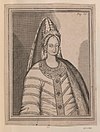 | Tsaritsa (Disputed) | 26 January 1598 | 3 March 1598 | 36 days | |
| Catherine I |  | Empress | 8 February 1725 | 17 May 1727 | 2 years, 98 days | |
| Anna |  | Empress | 26 February 1730 | 28 October 1740 | 10 years, 245 days | |
| Elizabeth |  | Empress | 6 December 1741 | 5 January 1762 | 20 years, 30 days | |
| Catherine II |  | Empress | 9 July 1762 | 17 November 1796 | 34 years, 131 days |
- Queen Boa,[83] also known as Boareks (reigned in the 520s)
Kingdom of the Cimmerian Bosporus
- Kamasarye Philoteknos (reigned 180–150 BC) – she co-ruled with her husband Paerisades III
- Dynamis (reigned in 47 BC, 44–17 BC, and 16–14 BC) – she co-ruled with her first husband Asander in 47 BC and from 44 BC until 17 BC; then she co-ruled with her second husband Polemon I from 16 BC until her death
- Gepaepyris (reigned 37/38–39 AD)
- Tulun Beg Khanum (reigned 1370–1371)
- Fatima Soltan (reigned 1679–1681)
Northern Europe
Denmark, Norway and Sweden
| Monarch | Portrait | Title | State | Start of reign | End of reign | Length of reign | Ref. |
|---|---|---|---|---|---|---|---|
| Margaret I |  | Queen | Denmark | 10 August 1387 | 28 October 1412 | 25 years, 79 days | |
| Norway | 2 February 1388 | 24 years, 269 days | |||||
| Sweden | 24 February 1389 | 23 years, 247 days | |||||
| Christina |  | Queen | Sweden | 16 November 1632 | 16 June 1654 | 21 years, 212 days | |
| Ulrika Eleonora |  | Queen | Sweden | 5 December 1718 | 29 February 1720 | 1 year, 86 days | |
| Margrethe II |  | Queen | Denmark | 14 January 1972 | 14 January 2024 | 52 years, 0 days |
Western Europe
Luxembourg and Belgium
- Mary of Burgundy (reigned 1477–1482) – according to E. William Monter [de]'s book, Mary of Burgundy and Isabella Clara Eugenia are included in the list of thirty women sovereigns over European states between 1300 and 1800[85]
- Isabella Clara Eugenia (reigned as independent sovereign 1598–1621) – during her and Albert's co-reign period, the Spanish Netherlands temporarily had formal independence from Spain
- Maria Theresa (reigned 1740–1780) – she was also the sovereign of many other states as ruler of the Habsburg monarchy
- Marie-Adélaïde (reigned 1912–1919)
- Charlotte (reigned 1919–1964)
Netherlands
| Monarch | Portrait | Title | State | Start of reign | End of reign | Length of reign | Ref. |
|---|---|---|---|---|---|---|---|
| Wilhelmina |  | Queen | Netherlands | 23 November 1890 | 4 September 1948 | 57 years, 286 days | |
| Juliana |  | Queen | Netherlands | 4 September 1948 | 30 April 1980 | 31 years, 239 days | |
| Beatrix |  | Queen | Netherlands | 30 April 1980 | 30 April 2013 | 33 years, 0 days |
Monaco
- Claudine (reigned 1457–1458)
- Louise Hippolyte (reigned 1731)
United Kingdom and Ireland
- Cartimandua (reigned c. 43 AD – c. 69 AD) — queen of the Brigantes, a Celtic people in what is now Northern England; she came to power around the time of the Roman conquest of Britain, and formed a large tribal agglomeration that became loyal to Rome; she is known exclusively from the work of a single Roman historian, Tacitus, though she appears to have been widely influential in early Roman Britain
- Boudica (reigned c. 60 AD – c. 61 AD) — queen of the Brythonic Celtic Iceni, people of Norfolk, in Eastern Britain; in 61 AD, she led a major uprising of the tribes against the occupying forces of the Roman Empire
- Seaxburh of Wessex (reigned c. 672–674) – she reigned jointly with her husband Cenwalh and, according to tradition, ruled Wessex as Queen for a year following Cenwalh's death in c. 672
| Monarch | Portrait | Title | State | Start of reign | End of reign | Length | Ref. |
|---|---|---|---|---|---|---|---|
| Æthelflæd |  | Lady | Mercia | 911 | 918 | c. 7 years | |
| Ælfwynn | – | Lady | Mercia | 12 June 918 | 4 December 918 | 175 days | |
| Matilda |  | Lady (Disputed) | England | 8 April 1141 | 1148 | c. 7 years | [86] |
| Margaret |  | Queen (Disputed) | Scotland | 19 March 1286 | September 1290 | 4 years, 6 months | |
| Mary I of Scotland |  | Queen | Scotland | 14 December 1542 | 24 July 1567 | 24 years, 222 days | |
| Jane |  | Queen (Disputed) | England | 10 July 1553 | 19 July 1553 | 9 days | [87] |
| Ireland | |||||||
| Mary I of England |  | Queen | England | 24 July 1553 | 17 November 1558 | 5 years, 116 days | |
| Ireland | |||||||
| Elizabeth I |  | Queen | England | 17 November 1558 | 24 March 1603 | 44 years, 127 days | |
| Ireland | |||||||
| Mary II |  | Queen | England | 13 February 1689 | 28 December 1694 | 5 years, 318 days | |
| Ireland | |||||||
| Scotland | 11 April 1689 | 5 years, 261 days | |||||
| Anne |  | Queen | England | 8 March 1702 | 1 May 1707 | 5 years, 54 days | |
| Scotland | |||||||
| Ireland | 1 August 1714 | 12 years, 146 days | |||||
| Great Britain | 1 May 1707 | 7 years, 92 days | |||||
| Victoria |  | Queen | United Kingdom | 20 June 1837 | 22 January 1901 | 63 years, 216 days | |
| Elizabeth II |  | Queen | United Kingdom | 6 February 1952 | 8 September 2022 | 70 years, 214 days |
Southern Europe
Albania
Bosnia
- Jelena Gruba (reigned 1395–1398)
Bulgaria
- Antonia Tryphaena (reigned 18–38) – she ruled with her son Rhoemetalces II
- Pythodoris II (reigned 38–46) – she ruled with Rhoemetalces III
Cyprus
- Charlotte (reigned 1458–1464)
- Catherine Cornaro (reigned 1474–1489)
- Victoria (reigned 1878–1901)
- Elizabeth II (reigned 1952–1960)
Greece

- Deidamia II (reigned c. 233 BC)
- Irene of Athens (reigned 797–802) – she normally referred to herself as basilissa (empress), although there are three instances of the title basileus (emperor) being used by her. From 792 she was a co-ruler.
- Theodora the Armenian (reigned 842–856, disputed) - after the death of her husband she became the co-ruler of her son but in fact she ruled the empire alone; some historians regard her as an empress regnant rather than just a regent
- Thekla (reigned 842–856, disputed), co-ruler of Theodora the Armenian
- Zoë Porphyrogenita (reigned 1028–1041 and 1042–1050) – she ruled with her consorts Romanos III and Michael IV between 1028 and 1041; she ruled with her sister Theodora and her third husband Constantine IX from 1042 to 1050
- Theodora Porphyrogenita (reigned 1042–1056) – she ruled from 1042 jointly with her sister Zoe and Zoe's third husband Constantine IX; she ruled from 1055 until her own death as sole monarch.
- Eudokia Makrembolitissa (reigned 1067, disputed) - after the death of her husband she became a ruler; some historians regard her as an empress regnant rather than just a regent
- Maria Angelina Doukaina Palaiologina (reigned 1384–1385)
Frankokratia
Latin Empire was disestablished in 1261, but Latin states in Greece, also known as Frankokratia, continued to recognize Latin emperors in exile as their overlords until 1383.
- Catherine I (reigned 1283–1307)
- Catherine II (reigned 1307–1346)
- Cratesipolis (reigned c. 314 BC – c. 306 BC) — ruler of Sicyon and Corinth
- Nicaea, ruler of Corinth
Italy
- Amalasuintha (reigned 534–535) – she ruled first as regent for her son and thereafter as queen regnant in her own right
- Elena of Gallura (reigned 1203–1218)
- Benedetta of Cagliari (reigned 1214–1233)
- Adelasia of Torres (reigned 1236–1259)
- Joanna of Gallura (reigned 1298–1308)
- Eleanor of Arborea (reigned 1383–1404)
- Constance I (reigned 1194–1198) – she co-ruled with her husband Henry VI, Holy Roman Emperor until 1197
- Constance II (reigned 1282–1285) – she co-ruled with her husband Peter III of Aragon
- Maria (reigned 1377–1401) – she co-ruled with her husband Martin I the Younger from 1392
- Joan the Mad (reigned 1516–1555) – she was also Queen of Castile and Aragon
- Joan I (reigned 1343–1382)
- Joan II (reigned 1414–1435)
- Joan III the Mad (reigned 1516–1555) – she was also Queen of Castile and Aragon
Italian states from the Congress of Vienna to the unification of Italy [it]
The Italian duchies restored by the Congress of Vienna became fully sovereign because the Kingdom of Italy was not restored.
- Marie Louise, Duchess of Parma (reigned 1814–1847)
- Maria Luisa, Duchess of Lucca (reigned 1815–1824)
- Maria Beatrice d'Este, Duchess of Massa (reigned 1815–1829)
Portugal
| Monarch | Portrait | Title | State | Start of reign | End of reign | Length | Ref. |
|---|---|---|---|---|---|---|---|
| Theresa |  | Queen | Portugal (disputed) | 1116 | 24 June 1128 | ||
| Beatrice |  | Queen | Portugal (disputed) | 1383 | 1385 | ||
| Maria I |  | Queen | Portugal | 24 February 1777 | 20 March 1816 | 39 years, 25 days | |
| Maria II |  | Queen | Portugal | 2 May 1826 | 23 June 1828 | 2 years, 52 days | |
| 26 May 1834 | 15 November 1853 | 19 years, 173 days |
Spain and Andorra
- Toda (reigned c. 958) — queen of Deio and Lizarrara[88]
- Andregoto Galíndez (reigned c. 971) — queen of Lumbier
| Monarch | Portrait | Title | State | Start of reign | End of reign | Length | Ref. |
|---|---|---|---|---|---|---|---|
| Urraca the Reckless |  | Empress | Spain | 30 June 1109 | 8 March 1126 | 16 years, 251 days | |
| Queen | León | ||||||
| Queen | Castile | ||||||
| Queen | Galicia | 1111 | |||||
| Petronilla |  | Queen | Aragon | 13 November 1137 | 18 July 1164 | 26 years, 248 days | |
| Urraca the Asturian | – | Queen | Kingdom of Artajona [eu] | 1144 | 1153 | ||
| Berengaria |  | Queen | Castile | 6 June 1217 | 31 August 1217 | 86 days | |
| Queen | Toledo | ||||||
| Sancha | – | Queen | León | 24 September 1230 | 11 December 1230 | 78 days | |
| Dulce | – | Queen | León | 24 September 1230 | 11 December 1230 | 78 days | |
| Joan I |  | Queen | Navarre | 22 July 1284 | 2 April 1305 | 20 years, 254 days | |
| Joan II |  | Queen | Navarre | 1 April 1328 | 6 October 1349 | 21 years, 188 days | |
| Isabella of Foix-Castelbon | – | Co-Princess | Andorra | 1398 | 1412 | ||
| Blanche I |  | Queen | Navarre | 8 September 1425 | 1 April 1441 | 15 years, 205 days | |
| Blanche II | – | Queen | Navarre | 23 September 1461 | 2 December 1464 | 3 years, 70 days | |
| Isabella I |  | Queen | Castile | 11 December 1474 | 26 November 1504 | 29 years, 351 days | |
| Queen | León | ||||||
| Eleanor | – | Queen | Navarre | 28 January 1479 | 12 February 1479 | 15 days | |
| Catherine | 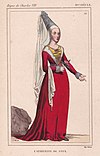 | Queen | Navarre | 7 January 1483 | 12 February 1517 | 34 years, 36 days | |
| Co-Princess | Andorra | ||||||
| Joanna[nb 1] |  | Queen | Castile | 26 November 1504 | 12 April 1555 | 50 years, 137 days | |
| Queen | Aragon | 23 January 1516 | 39 years, 79 days | ||||
| Queen | Upper Navarre | ||||||
| Jeanne[nb 2] |  | Queen | Lower Navarre | 25 May 1555 | 9 June 1572 | 17 years, 15 days | |
| Co-Princess | Andorra | ||||||
| Isabella II[nb 3] |  | Queen | Spain | 29 September 1833 | 30 September 1868 | 35 years, 1 day | |
| Queen | Upper Navarre | 30 November 1833 | 62 days |
Malta
| Monarch | Portrait | Title | State | Start of reign | End of reign | Length | Ref. |
|---|---|---|---|---|---|---|---|
| Elizabeth II |  | Queen | Malta | 21 September 1964 | 13 December 1974 | 10 years, 83 days |
Montenegro
- Neda (reigned 1043–1046)
Oceania
Australasia
Australia
- Victoria (reigned 1901)
- Elizabeth II (reigned 1952–2022)
New Zealand
- Elizabeth II (reigned 1952–2022)

- Makea Takau Ariki, Queen/Supreme High Chiefess of the Cook Islands (reigned 1871–1911) – was the last monarch and only queen regnant of the Kingdom of Rarotonga established in 1858, she ceased to be sovereign after 1888
Melanesia
Fiji
- Elizabeth II (reigned 1970–1987)
Papua New Guinea
- Elizabeth II (reigned 1975–2022)
Solomon Islands
- Elizabeth II (reigned 1978–2022)
Polynesia
American Samoa

- Tuimanufili (reigned as 20th Tui Manu'a)
- Siliave (reigned as 23rd Tui Manu'a)
- Seuea (reigned as 27th Tui Manu'a)
- Matelita (reigned 1891–1895, as 39th Tui Manu'a)
French Polynesia
- Teriimaevarua II (reigned 1860–1873)
- Teriimaevarua III (reigned 1873–1895)

- Teha'apapa I (reigned 1760–1790)
- Teri'itaria II (reigned 1815–1852)
- Teha'apapa II (reigned 1868–1893)
- Teuhe (reigned 1888–1890) – she reigned under a rebellion government against her mother Queen Tehaapapa II
- Teha'apapa III (reigned 1893–1895)
- Tehauroarii (reigned 1881–1884)
- Tuarii (reigned till 1897) – she reigned under a rebellion government against the French with the support of Teraupo'o after Tamatoa VI abdicated.
- Daughter of Parima (reigned 1886–1887)
- Tamaeva IV (reigned 1876–1892)
- Tamaeva V (reigned 1892–1901)
- Purea (reigned in the 18th century), queen of the Teva clan on the southern part of the island before unification
- Pōmare IV (reigned 1827–1877)
- Vaekehu – her husband died in 1863, but Vaekehu continued to reign on her own as Queen
Hawaii
- Kalanikauleleiaiwi (reigned 1695–1725) — co-ruler of Hawaiʻi Island along with her brother Keaweʻīkekahialiʻiokamoku
- Ululani, Chiefess of Hilo
- Kapau-a-Nuʻakea, 3rd Chiefess of Molokai
- Kamauliwahine, 4th Chiefess of Molokai
- Hualani, 5th Chiefess of Molokai
- Kanealai, Chiefess of Molokai
- Kūkaniloko, 11th Moʻi of Oʻahu
- Kalaimanuia, 12th Moʻi of Oʻahu (reigned 1600–1665)
- Kaikilani, 17th Moʻi of Hawaiʻi Island (reigned 1575–1605)
- Keakamahana, 19th Moʻi of Hawaiʻi Island (reigned 1635–1665)
- Keakealaniwahine, 20th Moʻi of Hawaiʻi Island (reigned 1665–1695)
- Kamakahelei, 22nd Moʻi of Kauaʻi (reigned 1770–1794)
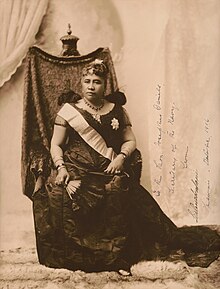
- Liliʻuokalani (reigned 1891–1893 and claimed status as queen until her death in 1917) – the only queen regnant of the Kingdom of Hawaii established by Kamehameha I
Tonga
- Tupoumahe'ofo (reigned 1777–1781, as Tu'i Kanokupolu)
- Salote Tupou III (reigned 1918–1965)
Tuvalu
- Elizabeth II (reigned 1978–2022)
Wallis and Futuna
Uvea
- Toifale (reigned 1825)
- Falakika Seilala (reigned 1858–1869)
- Amelia Tokagahahau Aliki (reigned 1869–1895)
- Aloisia Brial (reigned 1953–1958)
Legendary and mythological monarchs
Chile
China
- Nüwa, the only female among Three Sovereigns and Five Emperors
- Queen Mother of the West
- Queen of the Aini people (爱尼人), a branch of the Hani people[89]
Congo
Kuba Kingdom
Women written in italics in the list of Kuba Kingdom rulers:[90]
- Lobamba
- Gokare
- Sanga Motunu
- Pelama Pena
- Boeke
- Sanga Lenga
- Bosh Akama
- Kele Kama
- Bolueme
Czechia
Easter Island
- Vakai, queen of Kingdom of Rapa Nui
Ecuador
- Paccha Duchicela, queen of the Kingdom of Quito
Egypt
- Nitocris of the Sixth Dynasty – Nitocris is mentioned within Herodotus' book Histories as being the last Pharaoh of the Sixth Dynasty of Egypt.
- Charoba – A queen mentioned in a history of Egypt written by 12th-century Arab writer Murtada ibn al-'Afif.[91]
- Daluka of the Soleyman Dynasty – An Antediluvian monarch from medieval Coptic and Arabic texts who supposedly built a wall around Egypt to protect the country from invasion and also was said to have built a pyramid and a nilometer at Memphis. Sometimes claimed to be a cousin of Charoba and her immediate successor.[91]
- Borsa of the Soleyman Dynasty – Mentioned in medieval Coptic and Arabic texts as a ruler of Egypt in the Antediluvian era.[92] Sometimes described as a "priestess".[91]
Ethiopia
The following names all come from a regnal list written in 1922, which is partially based on native traditions and older regnal lists, but also contains additional names of Coptic and Nubian origin, the latter due to its association with the word "Aethiopia" in ancient and Biblical texts. Claimed dates follow the Ethiopian calendar.[93]
- Borsa (reigned 4321–4254 BC) – Originated from Coptic tradition.[92]
- Eylouka (reigned 3776–3731 BC) – Originated from Coptic tradition.[92]
- Nehasset Nais (reigned 2434–2404 BC)
- Kasiyope (reigned 1890–1871 BC) – Originated from Greek mythology.
- Mumazes reigned (1675–1671 BC) – Daughter of king Bonu I.[94]
- Aruas (reigned 1671 BC) – Daughter of Mumazes.[93]
- Helena (reigned 1358–1347 BC)
- Makeda (reigned 1013–982 BC) – The Biblical queen of Sheba in Ethiopian tradition and mother of Menelik I. She succeeded to the throne after the death of her father king Kawnasya.[95]
- Nicauta Kandake I (reigned 740–730 BC)
- Hadina (reigned 372–362 BC) – Most regnal lists of Ethiopia claim this monarch reigned for 9 years.[96]
- Nikawla Kandake II (reigned 342–332 BC) – An alternate name for the Queen of Sheba[97]
- Akawsis Kandake III (reigned 325–315 BC)
- Nikosis Kandake IV (reigned 242–232 BC)
- Awsena (reigned 99–88 BC) – Most regnal lists of Ethiopia claim this monarch reigned for 1 year.[96]
- Nicotnis Kandake V (reigned 35–25 BC)
- Garsemot Kandake VI (reigned 40–50 AD) – Supposedly the Kandake from the Biblical story of the Ethiopian Eunuch.[93]
- Wakana (reigned 230 AD) – Reigned for 2 days.[93]
- Ahywa Sofya (reigned 299–332 AD) – Likely based on Sofya of Axum, mother of Ezana.
- Adhana I (reigned 369–374 AD) – Some regnal lists of Ethiopia claim this monarch reigned for 14 years.[98]
- Adhana II (reigned 412–418 AD) – Some regnal lists claim this monarch co-ruled with king Abreha III.[98]
Kingdom of Simien
- Gudit (reigned c. 960 – c. 1000)
Sidama people
French Polynesia
Greece
Amazons
- Otrera, the daughter of Eurus (the east wind)
- Hippolyta, the Amazonian queen who possessed a magical girdle
- Penthesilea, the daughter of Ares and Otrera and the sister of Hippolyta, Antiope and Melanippe
- Antianara, the daughter of Ares and Otrera and the sister of Hippolyta, Antiope and Melanippe
- Eurypyle
- Lampedo
- Marpesia
- Aegea
- Myrina
- Orithyia
- Antiope
- Thalestris
India
- Yashovati [sv], ruler of Kashmir – she was described in Rajatarangini
- Pandaie
Indonesia
- Mahisa Suramardini Warmandewi, queen of Salakanagara (reigned 276–289 AD)[99]
- Sphatikarnawa Warmandewi, queen of Salakanagara (reigned 340–348 AD)[99]
Iran
Iraq
- Kubaba of Kish, the only queen on the Sumerian King List (reigned in the 25th century BC)
- Semiramis, the legendary queen of king Ninus, succeeding him to the throne of Assyria
- Nitocris of Babylon, the ruling queen of Babylon described by Herodotus in his Histories
Ireland
Japan
- Empress Jingū (reigned 201–269)
- Iitoyo
- Taburatsuhime [jp], ruler of Yamato-gun
- Sanai Isoba [jp], ruler of Yonaguni
Korea
- Lady Saso, honorary queen regnant of Silla
- Queen of Jeoknyeo-guk – Talhae's mother was the princess of Jeoknyeo-guk (Korean: 적녀국; Hanja: 積女國), an island country where only women lived[100]
Libya
Malaysia
Mexico
Aztec Empire
- Atotoztli II (possibly reigned 1466–1472, disputed)
Myanmar
Norway
Pakistan
- Nur Bakht Khatun of Trakhan Dynasty
- the Dareli queen of Trakhan Dynasty
Poland
Russia
Somaliland
- Arawelo, queen of Habr Je'lo
- Kola, queen of Abasa[101]
South Africa
- Majaji (reigned c. 350 AD)
Sri Lanka
- Kuveni, queen of Yakkha people of Sri Lanka before the founding of Kingdom of Tambapanni
Sudan
- Pelekh Candace of Meroë (reigned c. 345 – c. 332 BC)
Tunisia
- Dido (reigned 814–c. 760 BC) – also known as Alyssa. Founder of Carthage, according to tradition
Turkey
Turkmenistan
United Kingdom
- Queen Gwendolen (reigned in the 11th century BC)
- Queen Cordelia (reigned in the 8th century BC)
- Queen Marcia (reigned in the 4th century BC)
Vatican City
- Pope Joan, legendary monarch of the Papal States
Vietnam
- Lady Po Nagar of Champa, According to Cham legend, was the founder of the Cham nation
Yemen
- Bilkis in Yemen, claimed to be Queen of Sheba
Constituent and self-proclaimed monarchs
Botswana
- Mosadi Muriel Seboko (reigned 2002–present), the kgosikgolo of the Balete people
China
- Chen Shuozhen (reigned 653) – She led a peasant uprising in 653. During the rebellion, she declared herself huangdi. Jian Bozan recognized her as a female huangdi.[103]
- Mǐlǔ (Chinese: 米魯), also known as "Invincible Tian Wang (無敵天王)" – female rebel leader to assume the title of Tian Wang (天王)[104]
Easter Island
- Koreto, reigning queen of Easter Island (reigned ?–1876)[105] – Dutrou-Bornier married Koreto and appointed her as Queen
- Caroline, reigning queen of Easter Island (reigned 1877)[105] – after the death of Dutrou-Bornier, his widow Koreto briefly installed their daughter Caroline as Queen
Haiti
- Ti Memenne of La Gonâve (reigned c. 1920s) – she was the tribal ruler of La Gonâve
India
- Rani Gaidinliu, leader of the Naga people
Jamaica
- Queen Nanny, leader of the Jamaican Maroons
New Zealand
- Te Atairangikaahu, Māori queen (reigned 1966–2006)
Nigeria
Panama
- Rufina Santana, queen of Naso people (reigned 1982–1988)
United States Virgin Islands
The leaders of the 1878 St. Croix labor riot were:
- "Queen Mary" Thomas
- "Queen Agnes" Salomon
- "Queen Mathilda" McBean
Chieftainesses
Argentina
- Juana Koslay (princess) [es]
Botswana
Burundi
Chile
China
- Bǐtóngqián [zh] (Chinese: 比铜钳)
- Maliya Suo [zh]
Cameroon
Colombia
Dominican Republic
- Higuanamá, also spelled Hiquanama, Cacica of Higüey, one of the Chiefdoms of Hispaniola (reigned ?–1502) – she was described by Las Casas in his A Short Account of the Destruction of the Indies;[106] Juan de Esquivel hanged Higuanamá in 1502[107]
- doña María de Higüey, Cacica of Higüey (reigned c. 1514)[108]
- Isabel de Iguanama, Cacica of Higüey (reigned c. 1514)[108]
Ecuador
Fiji
- Lala Mara, the Roko Tui Dreketi of Rewa (reigned 1957–2004)
- Teimumu Kepa, the Roko Tui Dreketi of Rewa (reigned 2004–present)
Ghana
Guinea
Haiti
- Anacaona, Cacica of Jaragua, one of the Chiefdoms of Hispaniola
Ireland
- Grace O'Malley, also known as "the Pirate Queen", chieftainess of the Ó Máille clan in Umaill
Israel
- Deborah, the only female judge of Israelite tribes in Biblical judges
Kenya
Kyrgyzstan
- Kurmanjan Datka, also known as "The Tsaritsa of Alai", tribal leader of Alay (reigned 1862–1876)
Liberia
Malawi
New Zealand
Māori people
Rarotonga
- Makea Te Vaerua Ariki, High Chiefess of Te Au O Tonga (reigned 1845–1857)
- Pa Upoko Takau Ariki, High Chiefess of Takitumu (reigned 1855–1890)
- Tinomana Mereana Ariki, High Chiefess of Puaikura (reigned 1881–1908)
Niger
Nigeria
- Agbani Darego, honorary chieftaincy of Lagos
- Alaba Lawson
- Efunsetan Aniwura
- Efunroye Tinubu, Iyalode of the Egbas
- Funmilayo Ransome-Kuti
Palau
Pakistan
Peru
- Capillana, Capullana [es]
- Tomasa Tito Condemayta
Puerto Rico
Sierra Leone
South Africa
Xhosa
- Nosizwe Tyali, Chief of Imingcangathelo
- Nosiseko Gaika, Chief of Amambombo (Ngqika)
- Nomasilakhe Komani, Chief of Imingqalasi
South Sudan
United States of America
Appomattoc
Crow tribe
- Pine Leaf (reigned 1830s)
Giluts'aaw
- Victoria Young
Hoocąk
Pamunkey
- Cockacoeske (reigned 1656–1686)
- Queen Betty (reigned 1686–1708?)
- Queen Ann (reigned 1708?–1723?)
Pocasset Wampanoag
Sakonnet
Seneca tribe
- Queen Alliquippa (reigned 1754)
Vanuatu
Venezuela
- Apacuana
- Isabel (cacica) [es]
- Orocomay [es]
- Urimare (cacica) [es]
- Ana Soto (cacica) [es]
Yemen
Semi-independent feudal rulers
Albania
Duchy of Durazzo
- Joanna (reigned 1348–1368)
Principality of Albania
- Helena Thopia (reigned 1402–1403)
Principality of Valona
- Komnina Balšić (reigned 1385–1396)
- Ruđina Balšić (reigned 1414–1417)
Bangladesh
- Rani Bhabani, zamindar of Rajshahi Raj family
- Saratsundari Devi, zamindar of Puthia Raj family
- Hemanta Kumari Devi [bn], zamindar of Puthia Raj family
India
- Rani Bhawani, zamindar of Midnapore Raj
- Rani Shiromani, zamindar of Midnapore Raj
- Rani Rashmoni, zamindar of Janbazar
Indonesia
- Gusti Raden Ayu Tirtonegoro R. Rasmana, ruler of the Duchy of Sumenep [id] (reigned 1750–1762)
Romania
- Catherine of Brandenburg, ruler of the Principality of Transylvania (reigned 1629–1630)
Crown landholders
Estonia
- Christina (reigned 6 November 1632 – 6 June 1654)
- Ulrika Eleonora (reigned 5 December 1718 – 29 February 1720)
- Catherine I (reigned 8 February 1725 – 17 May 1727)
- Anna (reigned 13 February 1730 – 28 October 1740)
- Elizabeth (reigned 6 December 1741 – 5 January 1762)
- Catherine II (reigned 9 July 1762 – 6 November 1796)
Finland
- Margaret I of Denmark (reigned 1389–1412)
- Christina (reigned 1632–1654)
- Ulrika Eleonora (reigned 1719–1720)
Iceland
- Margaret I (reigned 1388 – 28 October 1412)
Notes
References
- ^ "El linaje español más antiguo en Canarias :: Revista de historia". mdc.ulpgc.es. Archived from the original on 2022-09-27.
- ^ Tyldesley, Joyce. Chronicle of the Queens of Egypt. pp. 26–29, 33–34, 52–53.
- ^ Schneider, Thomas (2006). "The Relative Chronology of the Middle Kingdom and the Hyksos Period (Dyns. 12-17)". In Hornung, Erik; Krauss, Rolf; Warburton, David (eds.). Ancient Egyptian Chronology. Leiden: Brill. p. 174. ISBN 978-90-04-11385-5.
- ^ Hornung, E.; Krauss, R.; Warburton, D. A., eds. (2006). Ancient Egyptian Chronology. Leiden: Brill. p. 492. ISBN 9789047404002.
- ^ Bennett, Chris. "Arsinoe II". Egyptian Royal Genealogy.
- ^ Stanwick, Paul Edmund (22 July 2010). Portraits of the Ptolemies: Greek Kings as Egyptian Pharaohs. University of Texas Press. ISBN 9780292787476.
- ^ Chrystal, Paul (2017-02-28). Women at War in the Classical World. Grub Street Publishers. ISBN 978-1-4738-5661-5.
Arsinoe III was Queen of Egypt from 220–204 BCE,
- ^ Chris Bennett. "Cleopatra I". Tyndale House. Retrieved December 21, 2023.
- ^ Cleopatra II Archived 23 May 2011 at the Wayback Machine by Chris Bennett
- ^ Cleopatra III Archived 5 October 2011 at the Wayback Machine by Chris Bennett
- ^ Cleopatra IV Archived 24 September 2011 at the Wayback Machine by Chris Bennett
- ^ Berenice III Archived 5 October 2011 at the Wayback Machine by Chris Bennett
- ^ Cleopatra V Archived 26 November 2011 at the Wayback Machine by Chris Bennett
- ^ Tyldesley, Joyce (2006), Chronicle of the Queens of Egypt, p. 200, ISBN 0-500-05145-3.
- ^ Tyldesley, Joyce (2019). The Pharaohs. London: Quercus. p. 209. ISBN 978-1-78747-900-5.
- ^ Burstein, Stanley M. (2004). The Reign of Cleopatra. Westport, Connecticut: Greenwood Press. pp. xx–xxiii, 14, 155. ISBN 978-0-313-32527-4.
- ^ Arsinoe IV Archived 26 November 2011 at the Wayback Machine by Chris Bennett
- ^ Bryce, Trevor (2014). Ancient Syria: A Three Thousand Year History. Oxford University Press. p. 304. ISBN 978-0-19-100292-2.
- ^ Droa-Krupe, Kerstin; Fink, Sebastian (2021). Powerful Women in the Ancient World: Perception and (Self)Presentation. ISD LLC. pp. 308–316. ISBN 978-3-96327-139-7.
- ^ Kuckertz, Josefine (2021). "Meroe and Egypt". UCLA Encyclopedia of Egyptology: 5.
- ^ a b Török, László (2015). The Kingdom of Kush: Handbook of the Napatan-Meroitic Civilization. BRILL. p. 206. ISBN 978-90-04-29401-1.
- ^ Kuckertz, Josefine (2021). "Meroe and Egypt". UCLA Encyclopedia of Egyptology: 6.
- ^ Adam Simmons, 'A Short Note on Queen Gaua: A New Last Known Ruler of Dotawo (r. around 1520-6)?', Dotawo: A Journal of Nubian Studies (2023), doi:10.5070/D60060625.
- ^ a b c "Guinea Bissau Substates". guide2womenleaders.com.
- ^ Duquette, Danielle Gallois (1983). Dynamique de l'art bidjogo (Guinée-Bissau): contribution à une anthropologie de l'art des sociétés africaines (in French). Instituto de Investigação Científica Tropical. p. 71.
Dona Juliana, également reine de Canhabaque, qui, par contre, anima l'insurrection de ses sujets contre le gouvernement colonial en 1925
- ^ Duquette, Danielle Gallois (1983). Dynamique de l'art bidjogo (Guinée-Bissau): contribution à une anthropologie de l'art des sociétés africaines (in French). Instituto de Investigação Científica Tropical. p. 71.
Bernatzik, durant son voyage, entendait vanter le reine Idiana Ibop qui avait succédé à son mari, jusqu'à sa mort trois saisons des piuies auparavant, tellement elle s'était imposée à Canhabaque par son intelligence et sa bonté
- ^ a b Basil Davidson (2014). West Africa Before the Colonial Era: A History to 1850. Routledge. p. 229. ISBN 978-1-317-88265-7.
- ^ Dunn, Elwood D.; Beyan, Amos J.; Burrowes, Carl Patrick (2000-12-20). Historical Dictionary of Liberia. Scarecrow Press. p. 288. ISBN 978-1-4616-5931-0.
- ^ Palmer, H. R (1908). Journal of the Royal Anthropological Institute of Great Britain and Ireland. Vol. 1908.
- ^ Stewart, John (2006). African States and Rulers (3rd ed.). London: McFarland & Company, Inc. p. 71. ISBN 9780786425624.
- ^ Achebe, Nwando; Robertson, Claire, eds. (2019-04-16). Holding the World Together: African Women in Changing Perspective. University of Wisconsin Pres. p. 64. ISBN 978-0-299-32110-9.
- ^ Stewart, John (2006). African States and Rulers (3 ed.). McFarland & Company. p. 136. ISBN 978-0-7864-2562-4.
- ^ a b c Amirell, Stefan (2015). "Female Rule in the Indian Ocean World (1300–1900)". Journal of World History. 26 (3): 443–489. doi:10.1353/jwh.2015.0023. JSTOR 43901772. S2CID 141655723.
- ^ Ben, Cahoon (ed.). "Madagascar Traditional States". World Statesmen.
- ^ Evans-Pritchard, E. E. (2011). "The divine kingship of the Shilluk of the Nilotic Sudan". HAU: Journal of Ethnographic Theory. 1: 407–422. doi:10.14318/hau1.1.016. S2CID 162247139.
- ^ Mwakikagile, Godfrey (2020-03-20). Colonial Mentality and the Destiny of Africa. African Renaissance Press. p. 144.
- ^ McIntyre, Chris; McIntyre, Susan (2009). Zanzibar. Bradt Travel Guides. p. 8. ISBN 978-1-84162-254-5.
- ^ Ingrams, W. H. (2020-10-28). Zanzibar: The Island Metropolis of Eastern Africa. Routledge. p. 95. ISBN 978-1-000-14405-5.
- ^ Falola, Toyin; Amponsah, Nana Akua (2012-01-06). Women's Roles in Sub-Saharan Africa. Bloomsbury Publishing USA. p. xii. ISBN 978-0-313-38545-2.
- ^ "Busongora Kinglist". Busongora-Chwezi Kingdom. Retrieved 2024-01-14.
- ^ Dierks, Klaus. "THE PERIOD OF THE EXPLORERS, HUNTERS AND TRADERS". klausdierks.com.
- ^ a b c d e f g h Dierks, Klaus. "Traditional Leaders in the History of Namibia". klausdierks.com.
- ^ "Shambyu leader Queen Ribebe has died". The Namibian. 2015-06-15. Retrieved 2023-12-22.
- ^ "Hompa Sofia Mundjembwe Kanyetu Coronated". nbc. Retrieved 2023-12-22.
- ^ "The life, death, and afterlife of an ancient Maya king: A study of Pusilha Ruler G". Contributions in New World Archaeology: 269. 2016.
- ^ Baron, Joanne (2017). "The Mystery Queen of La Florida-Namaan". Expedition Magazine. Vol. 59, no. 2.
- ^ 권, 혜진 (2017-07-05). "계란형 얼굴에 구릿빛 피부…1천700년 전 페루 여왕 얼굴 복원". 연합뉴스 (in Korean). Retrieved 2024-01-13.
- ^ Jay, Jennifer W. (1996). "Imagining Matriarchy: "Kingdoms of Women" in Tang China". Journal of the American Oriental Society. 116 (2): 220–229. doi:10.2307/605697. ISSN 0003-0279. JSTOR 605697.
- ^ Book of Sui, vol. 83
- ^ a b Fan, Wenlan (1994). Zhongguo tong shi. Vol. 4. ISBN 978-7-01-002029-7.
- ^ a b c d Old Book of Tang, vol. 197
- ^ Fan Chuo, Manshu, vol. 4; "阿姹自為烏蠻部落王,從京師朝參,大蒙恩賞。"
- ^ Association of the Buddha Jayanti (1959). Japan and Buddhism. Tokyo News Service. p. 23.
- ^ Yoshie, Akiko; Tonomura, Hitomi; Takata, Azumi Ann «Gendered Interpretations of Female Rule: The Case of Himiko, Ruler of Yamatai». US-Japan Women's Journal, 44, 1, 2013, pàg. 13. DOI: 10.1353/jwj.2013.0009.
- ^ Brown, Delmer et al. (1979). Gukanshō, pp. 263–264; Varley, H. Paul. (1980). Jinnō Shōtōki, pp. 126–129; Titsingh, Isaac. (1834). Annales des empereurs du Japon, pp. 39–42., p. 39, at Google Books
- ^ Brown, Delmer et al. (1979). Gokanshō, p. 265–267; Varley, H. Paul. (1980). Jinnō Shōtōki. p. 130–134; Titsingh, Isaac. (1834). Annales des empereurs du Japon, pp. 43–54., p. 43, at Google Books
- ^ Titsingh, Isaac. (1834). Annales des empereurs du Japon, p. 59., p. 59, at Google Books
- ^ Titsingh, Isaac. (1834). Annales des empereurs du Japon, pp. 63–65, p. 63, at Google Books; Brown, Delmer M. (1979). Gukanshō, p. 271; Varley, H. Paul. (1980). Jinnō Shōtōki. p. 140.
- ^ Brown, Delmer et al. (1979). Gukanshō, pp. 271–272; Varley, H. Paul. (1980). Jinnō Shōtōki. pp. 140–141; Titsingh, Isaac. (1834). Annales des empereurs du Japon, pp. 65–67., p. 65, at Google Books
- ^ Titsingh, Isaac. (1834). Annales des empereurs du Japon, pp. 411–412.
- ^ Titsingh, Isaac. (1834). Annales des empereurs du Japon, pp. 419–420.
- ^ Jyotsna Kamat (2010-05-07). "Queen of Gersoppa: Chennabhairadevi, Brave Ruler of Gersoppa (1552–1606 C.E)". Kamatpotporri. Retrieved 2010-05-25.
- ^ Jha, Makhan (1997). Anthropology of Ancient Hindu Kingdoms: A Study in Civilizational Perspective. M.D. Publications Pvt. Ltd. p. 157. ISBN 978-81-7533-034-4.
- ^ De, Sushil Chandra (1990). Story of Freedom Struggle in Orissa. Orissa Sahitya Akademi. p. 36.
- ^ Dani, Ahmad Hasan; Masson, Vadim Mikhaĭlovich; Unesco (2003-01-01). History of Civilizations of Central Asia: Development in contrast : from the sixteenth to the mid-nineteenth century. UNESCO. p. 238. ISBN 978-92-3-103876-1.
- ^ Khan, Shah Ra'is (1987). Shah Ra'is Khan ki Tarikh-i Gilgit (in Urdu).
- ^ Siddiqui, Dr. Habibullah. "The Soomras of Sindh: their origin, main characteristics and rule" (PDF). Literary Conference on Soomra Period in Sindh.
- ^ John Norman Miksic; Goh Geok Yian (2016-10-14). Ancient Southeast Asia. Taylor & Francis. p. 464. ISBN 978-1-317-27904-4.
- ^ a b O'Connor, Sue; McWilliam, Andrew; Brockwell, Sally, eds. (2020-09-07). Forts and Fortification in Wallacea: Archaeological and Ethnohistoric Investigations. ANU Press. p. 191. ISBN 978-1-76046-389-2.
- ^ Syarifuddin, Ferry; Sakti, Ali (2021-02-08). Praktik Ekonomi dan Keuangan Syariah oleh Kerajaan Islam di Indonesia – Rajawali Pers (in Indonesian). PT. RajaGrafindo Persada. p. 83.
- ^ Chou, Cynthia (2009-10-16). The Orang Suku Laut of Riau, Indonesia: The Inalienable Gift of Territory. Routledge. p. 44. ISBN 978-1-134-43033-8.
- ^ James George Scott; John Percy Hardiman (1901). Gazetteer of Upper Burma and the Shan States, Part 2, Volume 2. p. 5.
He was succeeded in 1012 B.E. (1650) by his younger brother, Sao Ne Ya, who reigned for thirty years. He left no children and was succeeded by his wife, who held the State for three years and then died.
- ^ James George Scott; John Percy Hardiman (1901). Gazetteer of Upper Burma and the Shan States, Part 2, Volume 2. p. 6.
Hkun Hkawt, a brother of Hkun Lek, was appointed Sawbwa, but died in four years. In 1228 B.E. (1866), therefore, his youngest sister, one of the Queens, was appointed to the charge of Lai Hka with the title of Myoza. She appointed myooks and myo-teins to govern the State for her. This continued for two years and then the former Sawbwa, Hkun Mawng, now become a youth, was appointed to the State.
- ^ Majul, Cesar Adib. "An Analysis of the "Genealogy of Sulu"". Asian Studies: Journal of Critical Perspectives: 15.
- ^ a b c d Amirell, Stefan (2011). "The Blessings and Perils of Female Rule: New Perspectives on the Reigning Queens of Patani, c. 1584–1718". Journal of Southeast Asian Studies. 42 (2): 303–323. doi:10.1017/S0022463411000063. S2CID 143695148.
- ^ Hägerdal, Hans (2007). "Rebellions or factionalism? Timorese forms of resistance in an early colonial context, 1650-1769". Bijdragen tot de Taal-, Land- en Volkenkunde. 163 (1): 8. ISSN 0006-2294. JSTOR 27868341.
- ^ a b c Niner, Sara, ed. (2016-08-05). Women and the Politics of Gender in Post-Conflict Timor-Leste: Between Heaven and Earth. Routledge. p. 39. ISBN 978-1-317-32789-9.
- ^ Minh Thảo Phạm (2003). Chuyện các bà hoàng trong lịch sử Việt Nam (in Vietnamese). Nhà xuất bản Văn hóa thông tin.
- ^ a b Hamilton, Bernard (2005-07-07). The Leper King and His Heirs: Baldwin IV and the Crusader Kingdom of Jerusalem. Cambridge University Press. p. 44. ISBN 978-0-521-01747-3.
- ^ a b Leichty, Erle (2011-06-23). The Royal Inscriptions of Esarhaddon, King of Assyria (680–669 BC). Penn State Press. pp. 20–21. ISBN 978-1-57506-646-2.
- ^ Book of Han, vol. 61
- ^ Mair, Victor H., ed. (1998). The Bronze Age and Early Iron Age Peoples of Eastern Central Asia. Vol. 2. The Institute for the Study of Man in collaboration with The University of Pennsylvania Museum Publications. p. 777. ISBN 978-0-941694-63-6.
Among the Greater Yuezhi it appears that a lady was appointed to be the ruling queen on at least one occasion. "Zhang Qian zhuan" 張騫傳 (Biography of Zhang Qian) in the History of the Han records that after the king of the Greater Yuezhi was killed by the Xiongnu, his wife was appointed to be the queen.
- ^ Nicholson, Oliver (19 April 2018). The Oxford Dictionary of Late Antiquity. Oxford University Press. p. 1316. ISBN 978-0-19-256246-3.
- ^ Claus Krag. "Åsa Haraldsdatter, Dronning". Norsk biografisk leksikon.
- ^ Monter, William (2012-01-24). The Rise of Female Kings in Europe, 1300-1800. Yale University Press. p. ix–xiii. ISBN 978-0-300-17327-7.
- ^ David Williamson (1986). Debrett's kings and queens of Britain. Webb & Bower. p. 51. ISBN 9780863501012.
- ^ Williamson, David (2010). Kings & Queens. National Portrait Gallery Publications. p. 95. ISBN 978-1-85514-432-3.
- ^ Collins, Roger (30 April 2016). "Queens-Dowager and Queens-Regent in Tenth-Century León and Navarre". In Parsons, John Carmi (ed.). Medieval Queenship. Springer. p. 89. ISBN 978-1-137-08859-8.
- ^ 陈永邺; 洪宜婷 (2017-01-01). 法律起源与国家法的形成:以西南少数民族的神话等文本为例 (in Chinese). 社会科学文献出版社. p. 241. ISBN 978-7-5201-0691-7.
- ^ Torday, Emil; Joyce, Thomas Athol (1910). Notes ethnographiques sur les peuples communément appelés Bakuba, ainsi que sur les peuplades apparentées. Les Bushongo (in French). pp. 17–19.
- ^ a b c Colavito, Jason. "Murtada ibn al-'Afif". Jason Colavito.
- ^ a b c Morié, Louis J. (1904). Histoire de L'Éthiopie (Nubie et Abyssinie): Tome Ier – La Nubie (in French). Paris. pp. 155–161.
{{cite book}}: CS1 maint: location missing publisher (link) - ^ a b c d Rey, C. F. (1927). In the Country of the Blue Nile. London: Camelot Press. pp. 263–270.
- ^ Araia, Ghelawdewos (December 7, 2009). "Brief Chronology of Ethiopian History". Retrieved 4 September 2022.
- ^ Budge, E. A. Wallis (1928). A History of Ethiopia: Nubia and Abyssinia (Volume I). London: Methuen & Co. p. 193.
- ^ a b Budge, E. A. Wallis (1928). A History of Ethiopia: Nubia and Abyssinia (Volume I). London: Methuen & Co. pp. 205–207.
- ^ "Nicaula". Brooklyn Museum. Retrieved 13 November 2022.
- ^ a b Budge, E. A. Wallis (1928). A History of Ethiopia: Nubia and Abyssinia (Volume I). London: Methuen & Co. pp. 259–261.
- ^ a b "Salakanagara, Kerajaan (Sunda) Tertua di Nusantara". Nusantara Institute (in Indonesian). 2019-03-28. Retrieved 2023-07-14.
- ^ "적녀국(積女國)". Encyclopedia of Korean Culture (in Korean). Retrieved 2024-02-10.
- ^ Burton, Richard Francis (1856). First Footsteps in East Africa: Or, An Explanation of Harar. Longman, Brown, Green, and Longmans. pp. 209–210.
- ^ Leick, Gwendolyn (1991). A Dictionary of Ancient Near Eastern Mythology. Psychology Press. p. 142. ISBN 978-0-415-00762-7.
- ^ 馮敏飛 (2016-01-01). 危世圖存 : 中國歷史上的15次中興 (in Chinese). 新華出版社. p. 355. ISBN 978-7-5166-2761-7.
- ^ History of Ming, vol. 316
- ^ a b Fischer, Steven R. (2005). Island at the End of the World: The Turbulent History of Easter Island. Reaktion Books. pp. 119–121. ISBN 978-1-86189-245-4.
- ^ A Short Account of the Destruction of the Indies, Chapter III: Of the Kingdoms contained in Hispaniola
- ^ "Cotubanamá". Diccionario biográfico español. Real Academia de la Historia. Retrieved 2024-04-26.
- ^ a b Ochoa, Margarita R.; Guengerich, Sara V., eds. (2021-03-11). Cacicas: The Indigenous Women Leaders of Spanish America, 1492–1825. University of Oklahoma Press. p. 4. ISBN 978-0-8061-6999-6.
- ^ Méndez-Méndez, Serafín; Fernández, Ronald (2015-07-14). Puerto Rico Past and Present: An Encyclopedia (2 ed.). Bloomsbury Publishing USA. p. 380. ISBN 978-1-4408-2832-4.
Bibliography
- L. Pierotti Cei, Madonna Costanza, Regina di Sicilia e d'Aragona, Mondadori, Milan 1995.
- S. Runciman, I Vespri siciliani, Rizzoli, Milan 1975.
External links
- Contemporary reigning queens (Zárate's Political Collections)
- v
- t
- e
- Elected or appointed national leaders
- Ministers and secretaries
- Speakers of national and territorial legislatures
- Constituent and dependent territory leaders
- First women holders of political offices
- Hereditary monarchs











